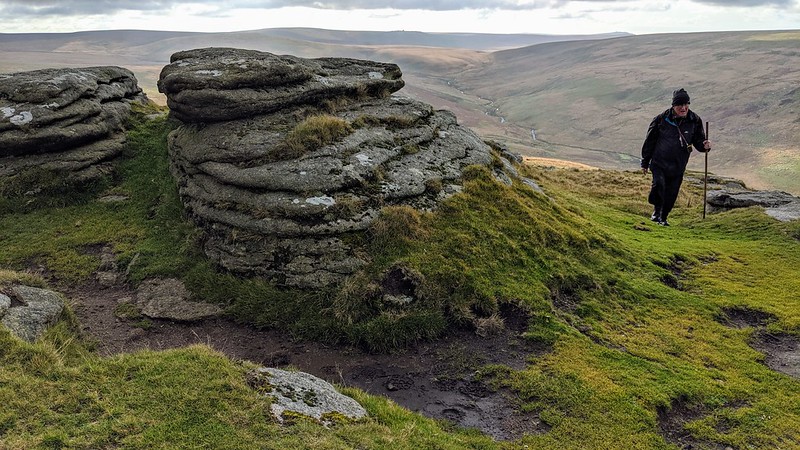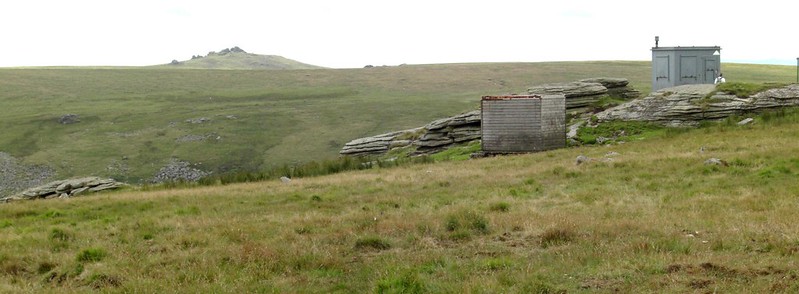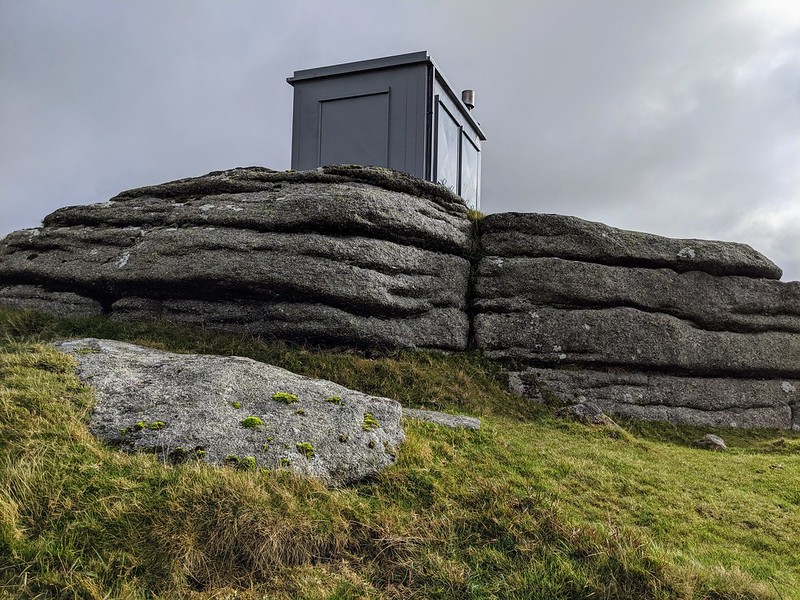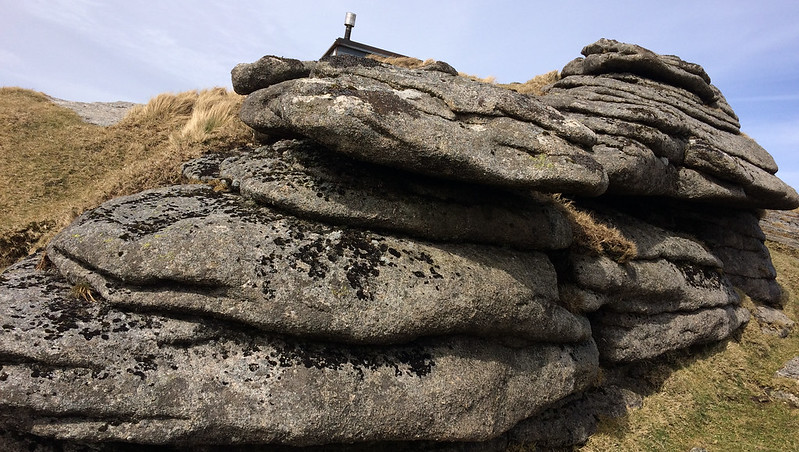TORS OF DARTMOOR
a database of both lesser- & well-known rocks and outcrops
Fordsland LedgeForsland Ledge, Foresland Ledge
 To most visitors to this area of the high north-west moor, the obvious landmarks of choice to visit are Yes Tor and High Willhays, the two highest peaks sometimes nicknamed the 'Roof of Devon', but sat about 500m to the south-west of the latter there is a low tor with a far grander view of the West Okement Valley. Somewhat akin to, but slightly larger than, the rocks of Kitty Tor that are situated directly across the valley, the main outcrop is an emergent tor with horizontal joints and somewhat overshadowed by the presence of two military range huts. Close by, and to the north, the remains of a prehistoric cairn can be found, its outer edge an obvious ring of stones with a central hollow where a cist or chamber would have once resided judging by the position of the upright stones.  William Crossing (1902) includes it in his list of 'The following Rock Piles have for the most part the character of tors, though that name is not given to them' in his book 'One Hundred Years on Dartmoor'. He catalogues it as "Foresland Ledge (Okehampton). - On the hillside under High Willes, towards the West Ockment." Eric Hemery (1983) provides further details; "From Dinger Tor the high valley side rises to Fordsland Ledge (1,900 feet), where a cohesive tor remnant stands on the brow, or fore-part, of the hill culminating above in High Willes (Redaven Brook). The enormous clitter fanning out below the ledge points to the former existence on it of a tor of great magnitude." The clitter is very impressive reaching to the right bank of the river over 150m below and best seen from the opposing valley side as a wilderness of strewn granite.  It is the thrilling vista seen from Fordsland Ledge that sets it apart from High Willhays since the views up and down the West Okement Valley are awesome. Lonely Lints Tor stands on its own peninsula surrounded by water on all but one side, whilst behind the dark hill of Fur Tor stands sentinel in the heart of the North Moor. To the right of this, the huge crest of Great Links Tor stands proud above the otherwise gentle ground of Amicombe Hill and Corn Ridge. In front of this, the smaller tors of Kitty, Stenga and Hunt can be seen, along with Branscombe's Loaf, and furthest right and below the noticeable fallen hillside of Slipper Stones stands Shelstone Tor, its clitter sprawled all over the hill. An altogether wonderful viewpoint, the modest tor at Fordsland Ledge adds additional interest to an already special scene and is well worth a diversion when exploring the 'Roof of Devon'. 
| ||||||||||||||||||||||||||||